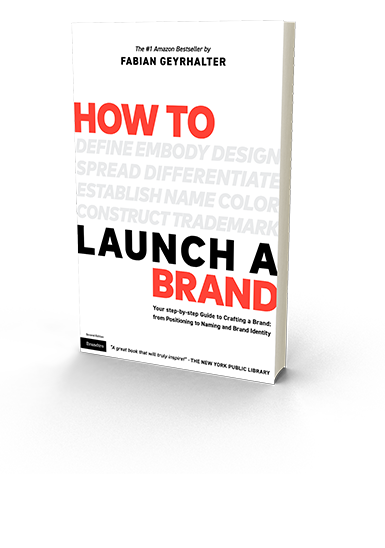Tag Archives: Logo
3 Crucial Brand Identity Mistakes You Can’t Afford To Make
You call it logo. We call it brand identity. Just sounds so much more important. Why? Because it is darn important. It is the visual platform to all of your new brand’s communications. It is the visual foundation of the house you are about to build; the eye candy and sex appeal; the quick read ‘know it all’ brand identifier. Getting it right is an art. If I can give you only 3 pieces of advice before you dive head first into crafting this – did I say important? – piece of design with your agency or freelance design partner, these are the ones to keep up front and center on your dashboard throughout your journey:
1. You Want It To Be Everything
You (will) have many ideas for how your new brand’s logo should look and what it should convey. I am here to tell you, sorry, you can’t fit them all into an identity design. You can try, but you will fail and you will suddenly find yourself not communicating anything at all. Your logo will look more like a painting of sorts and it will confuse rather than educate. Great identities convey one or two messages and they work because they do just that: They have a focus. They focus on the most important message through concept and visual target audience appeal through colors and typography. Ask yourself ‘What is the big idea and who should it cater to?’ A brand identity is a simple mark not a canvas. At times you are able to convey multiple concepts by refining areas of the logotype or mark, but it’s a lengthy and diligent process. When we re-branded Creative Talent Agency Match a few years back, we were able to communicate the symbiotic relationship between client and talent agency as well as talent and talent agency through typography that is co-dependent. We further use the letter A as a stand alone mark that signifies a computer cursor, which describes the online nature of the agency in a subliminal manner. Yet the identity does not look busy or complex. It’s a simple concept that is hiding subliminal messages within.
2. You Get Stuck In The Present
Don’t think of today. Think of tomorrow. Create an identity that not only will convey who you (company/product/service) will be in a couple years down the line, but also will keep connecting with your audience three to five years down the road. Don’t make it hip. Create something that has the ingredients to be timeless. We created the below identity for Don Joaquin’s line of Guacamole eight years ago and it works just as well in today’s overly crowded marketplace as it did back then because we focused stylistically on tradition while forming timeless emotional connections with the consumer. There was nothing hip about it then and there’s nothing hip about it now, and that is why it works.

3. You Want To Fit In
Your identity should surprise the segment you are about to disrupt. Show your competitors and consumers alike that there is a new player in the field. That alone is often the key ingredient for the initial purchase, or call – out of intrigue. Just like that funky tasting soft drink you tried out the other day because it looked so different and enticing, you just had to give it a shot. If your product or service is not like all the others, your logo needs to stand tall behind that claim and represent it visually as the key creative element that will be on all your outreach materials. When we crafted the identity for an online music service that promised to shake things up amongst traditional record labels, we decided to return the power of music to the hands of the individual, may that be the artist or the listener. It made a statement and conveyed disruption. Soon after launch the CEO told me that a complete stranger stopped him while wearing a company T-Shirt and said ‘The power of music, that’s a great shirt man.’ Little did he know it was a brand mark.

CATEGORIES: Your Brand Launch: Identity
Your new brand’s logo cannot be hip
I was asked the question, ‘What current trends in logo design do you truly hate?’ at a panel discussion at NYU back in December. I felt it was time to manifest my strong feelings towards trends in logo design. It’s an oxymoron. A logo shall never be trendy. Trends come and go, your brand identity is created to stick around for a mighty long time, hence ruling out even the remote possibility of making it trendy.
Your logo can still be modern, exciting and speak to a young audience – it just can not look like a trend. How would you know? Your idea might have been derived from something you saw, maybe you liked it because it looked hip – maybe you’ve seen similar logos before and you felt yours should follow the lead. Don’t. Lead rather than follow. First with your logo, then with the rest of your brand.
Hip logos? X that idea out.[Click to Tweet]
I hope the very painful overly retro compilation below will make the point even more convincing. If it’s a trend, others will follow and you will end up blending in, and there’s nothing hip about blending in. It’s tough because you thought you finally had the chance to jump on the hip bandwagon. Your logo is not the right channel for that, but you can always use a one-off campaign to do something trendy with your brand instead.

Hipster Logos
Your New Brand Shall Live without a Style Guide
I proclaim the death of the style guide. For decades new brands have been equipped by their branding agencies with expensive and thorough style guides explaining how design elements, such as the logo, typography and brand colors shall and shall not be used. Most are obvious and none will be followed, so why continue with the tradition?
Style guides are an important part of keeping your newly formed visual identity in check, one may argue, but does anyone care about using, or more importantly, reinforcing them? Over the past 11 years of running my branding agency I learned that it is more of a pricey exercise of ‘feel good’ and ‘make believe’ than an actionable tool. It will be presented to your employees in a big setting and over a period of 6 months it will be completely neglected. There is employee turnover mixed with new media adaptations and suddenly the lengthy and hard to navigate PDF is lost in some complex folder infrastructure and only gets found – and referenced – in order to point fingers, not to creatively implement.
Looking at a very traditional brand manual from 1970 for the New York Transit Authority (of the great design legend Massimo Vignelli), one can appreciate the ideology and craftsmanship, and one might even buy into the need for it. It seems logical, after all you just spent a good chunk of your marketing budget on establishing the brand, or re-establishing an organization, but this is not 1970, this is 2013 and your employees are spreading your brand through tens, often hundreds of channels. Channels change daily and new company cultures have changed from top down to hands-on employee empowered brands.
We stopped creating style guides at Finien, instead we create Brand Atmosphere© books for our clients. We highlight the language of the brand and focus on the flexibility of the just established identity rather than restricting it from the get-go. Different chapters provide actionable insights to jump-start the thinking process for usage in specific media types, the ones that are important to your specific brand based on your positioning and target audience. We show examples, in lose sketch form, that provide your staff an idea of what makes the brand strong within certain applications, but allows them to think and implement the brand’s voice in their own ways. I believe that leading by inspiring examples and providing the right tools and empowerment over the new brand will result in a better culture and a better, consistently evolving brand for your new company. You need simple, actionable tools that not only ensure a consistent brand, but more so, tools that ensure the brand can grow and adapt to new media channels.
It’s time to kill the style guide and provide new brands with actionable tools.[Click to Tweet]
Will your logo have the correct amount of white space around it and not get stretched beyond belief without the style guide? Yes, I think it will. Times have changed and style guide books get thicker and pricier without addressing your needs.
Spend your budget wisely – if your agency places a style guide as a budget line item, ask them why you will need it, how you will implement it during employee turnover and media outlet changes, and more importantly how they ensure the guide will fit your company’s specific needs and culture? Let me know what they say.
CATEGORIES: Your Brand Launch: Brand Atmosphere




